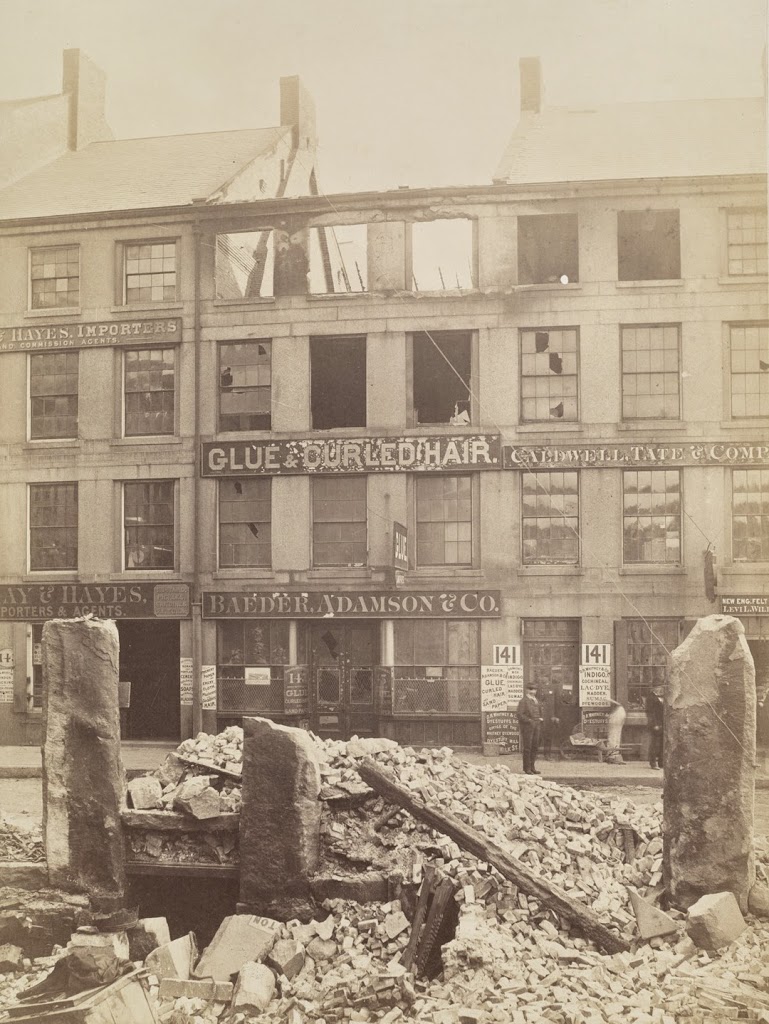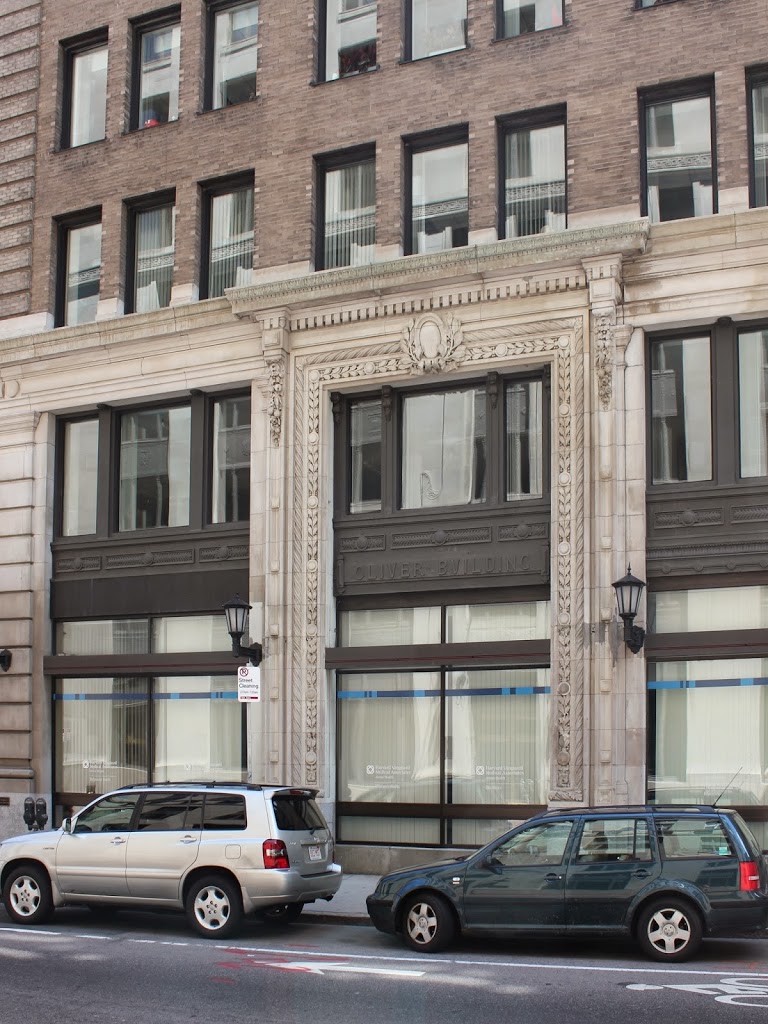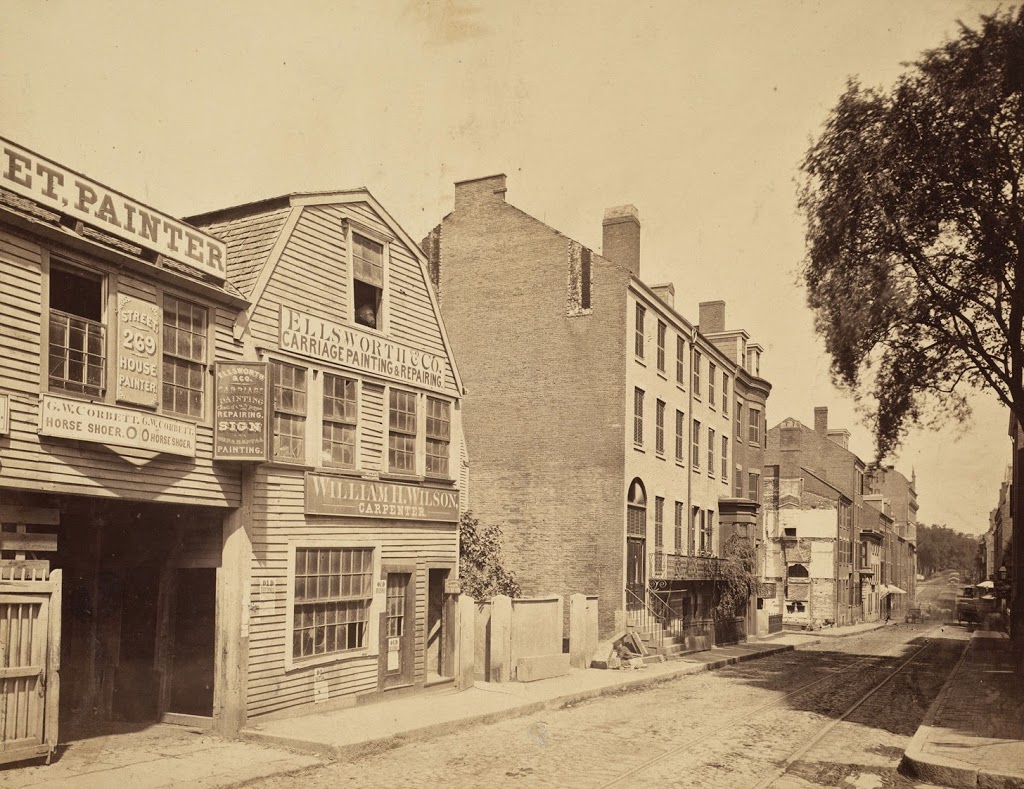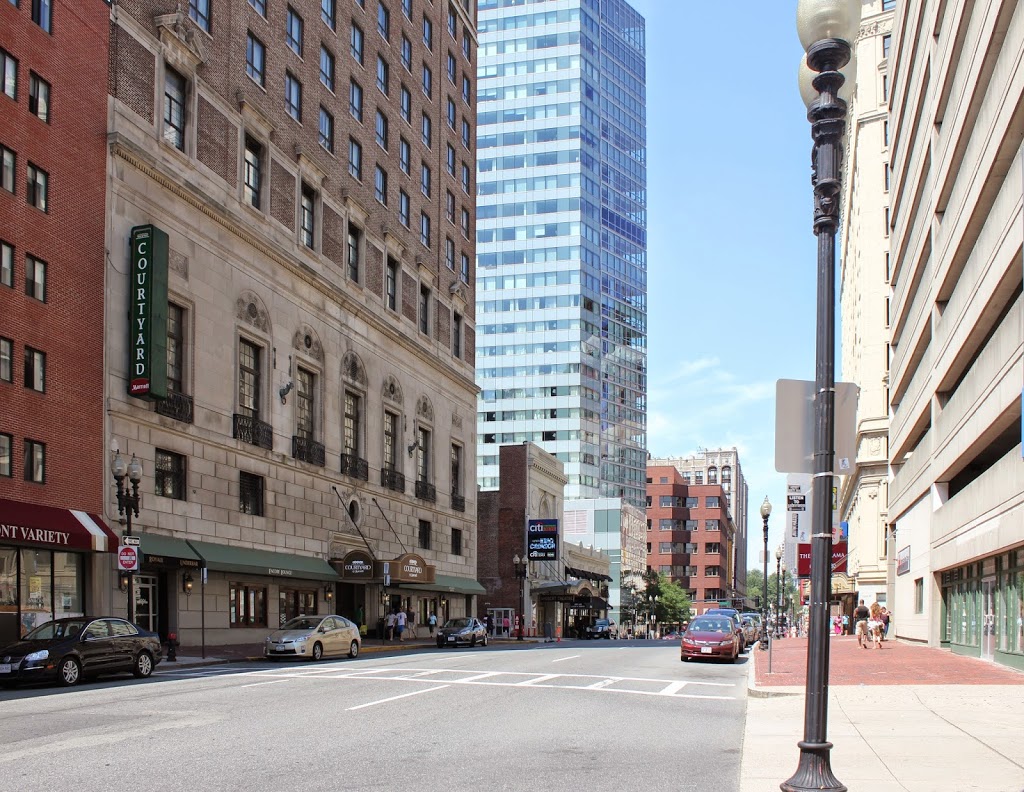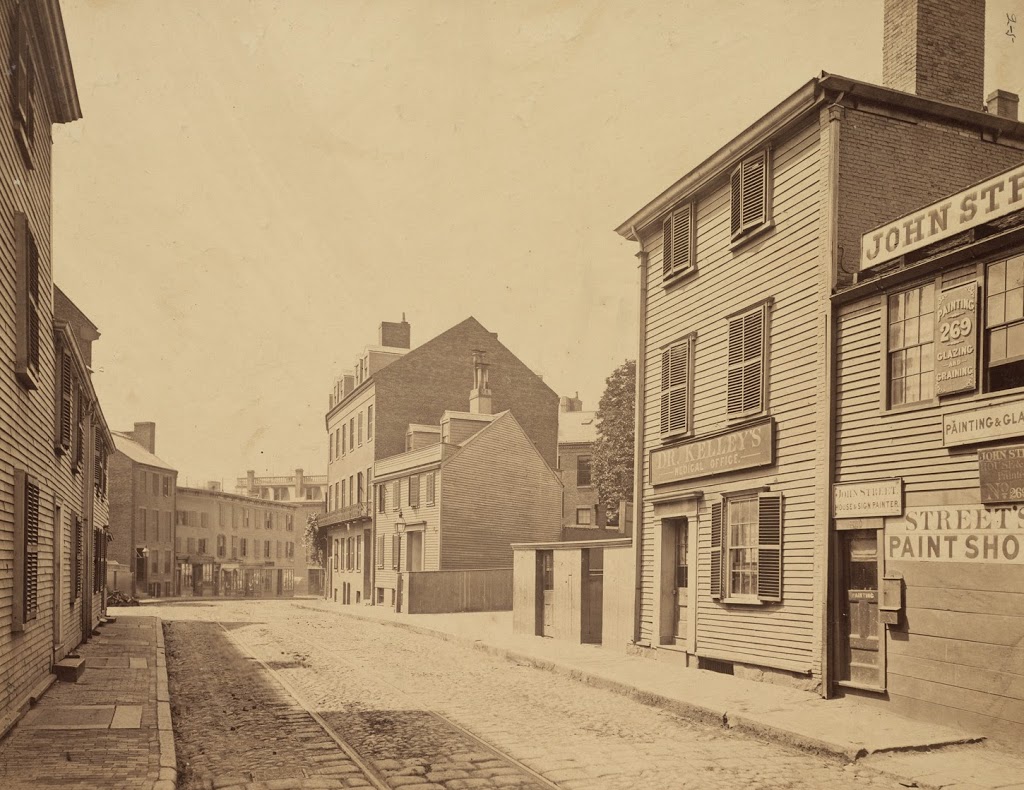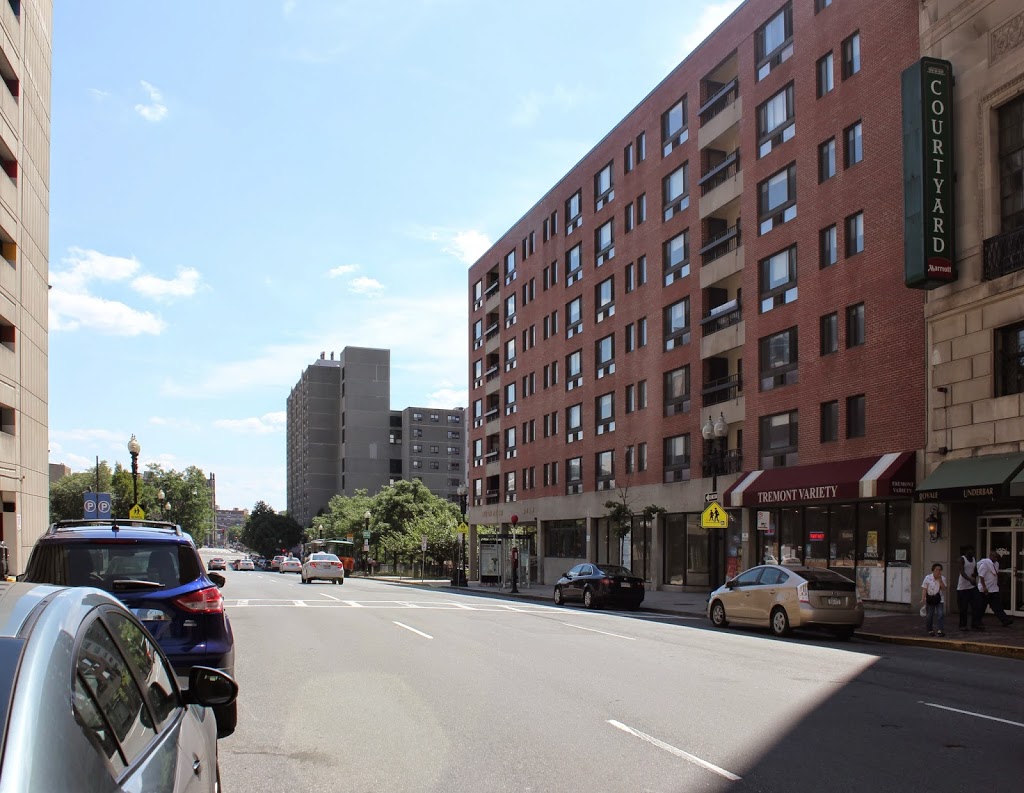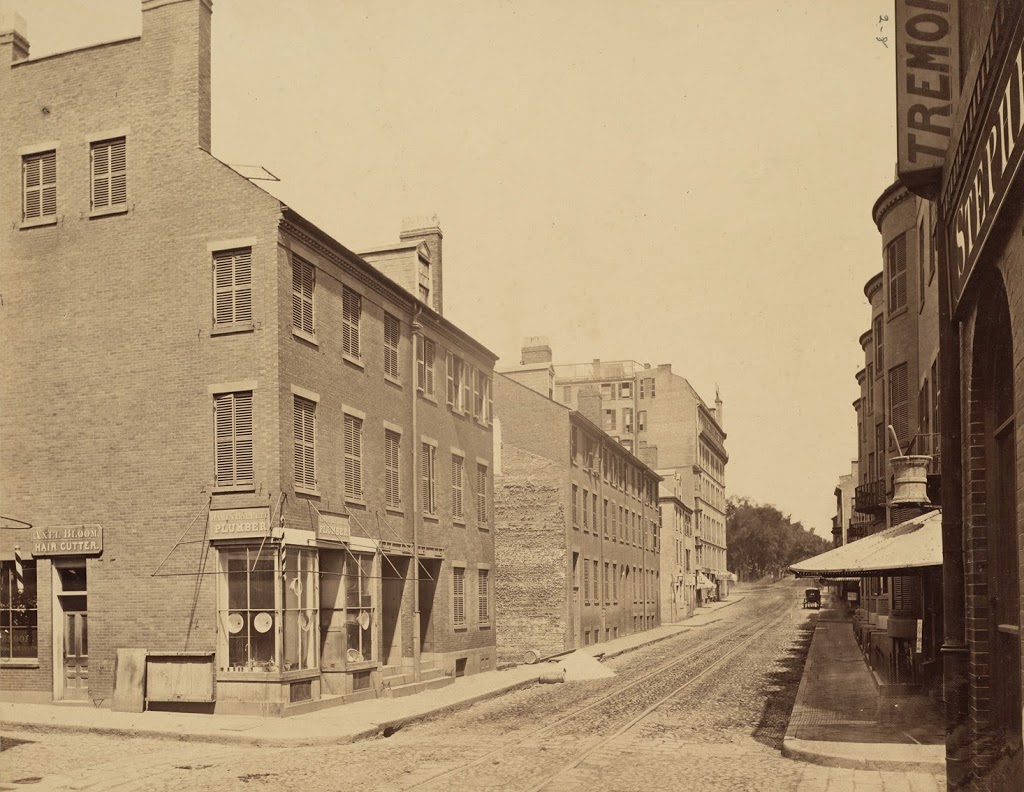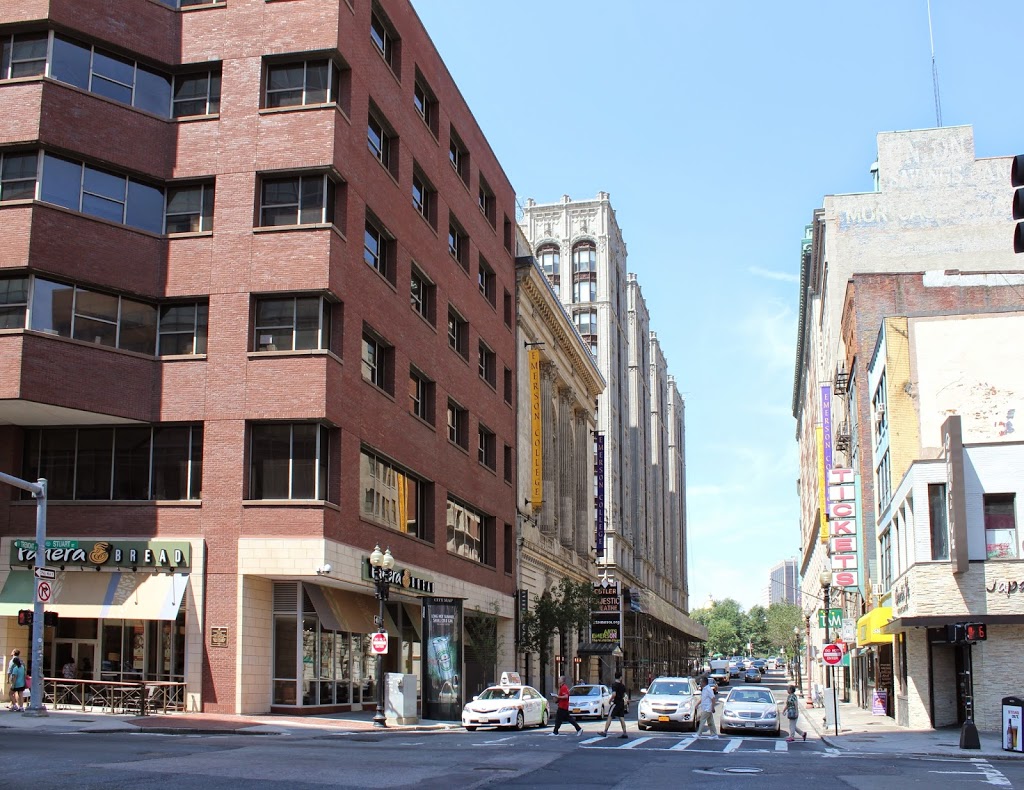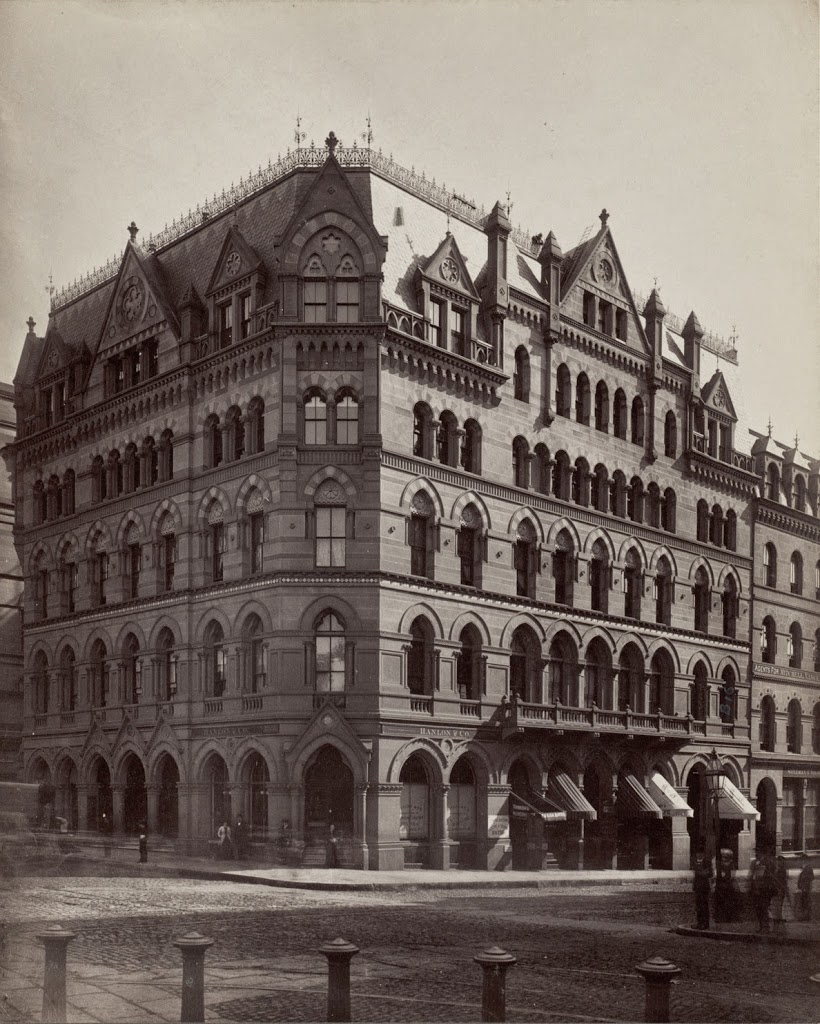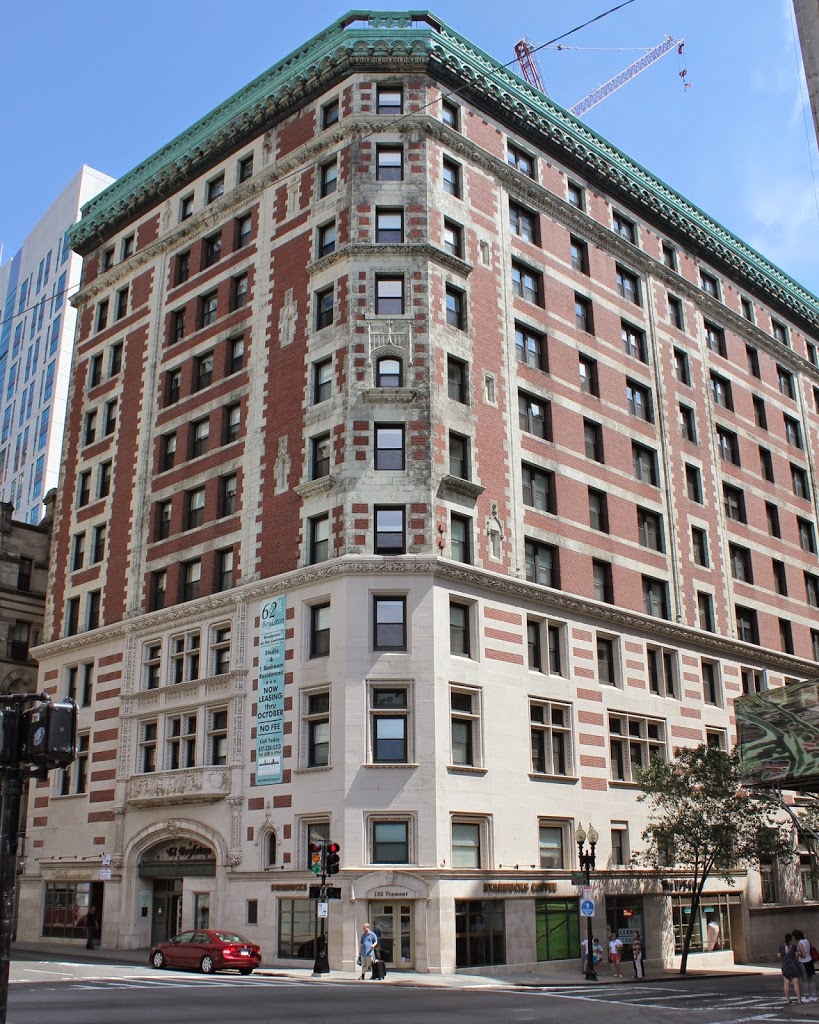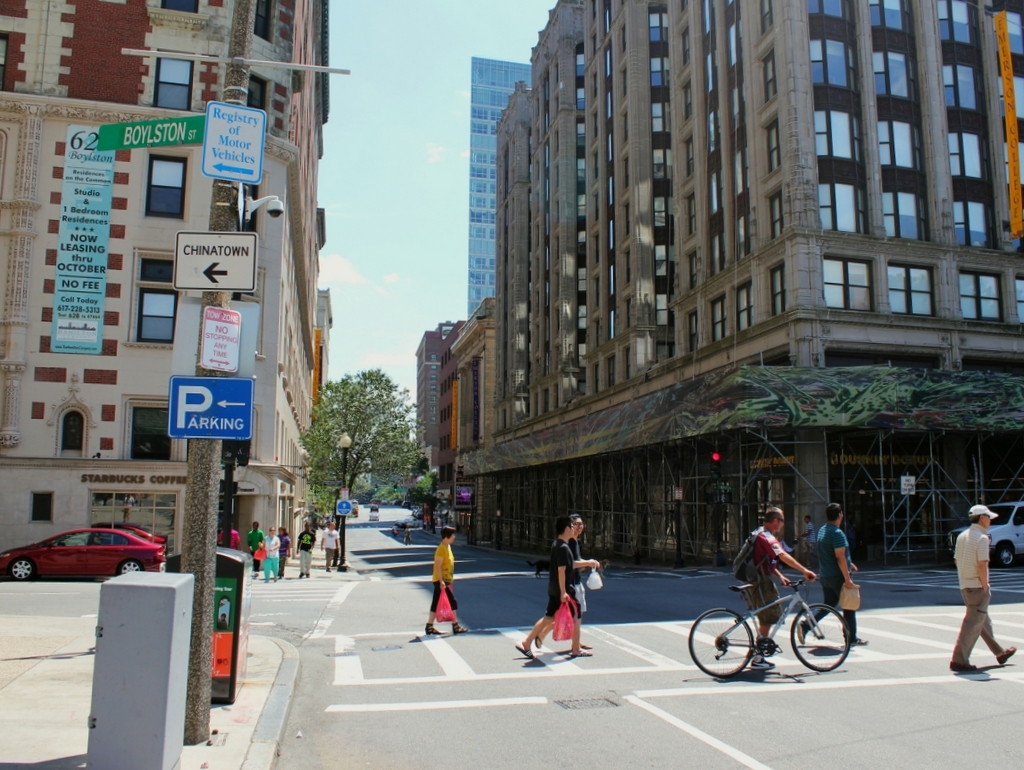Fire-damaged building on Milk Street, between Batterymarch and Oliver Streets, following the Great Boston Fire of 1872. Photo courtesy of Boston Public Library.
The scene in 2014:
Only a year after the far more well-known fire in Chicago, Boston suffered a similarly disastrous fire of its own. It devastated much of the southern part of Boston’s downtown, reaching all the way up to Milk Street, where this photo was taken. The building in the 1872 photo advertises “glue, curled hair, and sandpaper” which seems like an odd combination to today’s readers. But, “curled hair” in this case referred not to a hairstyle but to some sort of industrial product made with animal hair. As to its specific use, I am not sure, but today neither the buildings nor the glue, curled hair, and sandpaper industry are still at this location. Today, the building at the site is identified above the ground floor windows as the Oliver Building, and was built in 1903, suggesting that at least one other building occupied this spot after the 1872 photo was taken.

